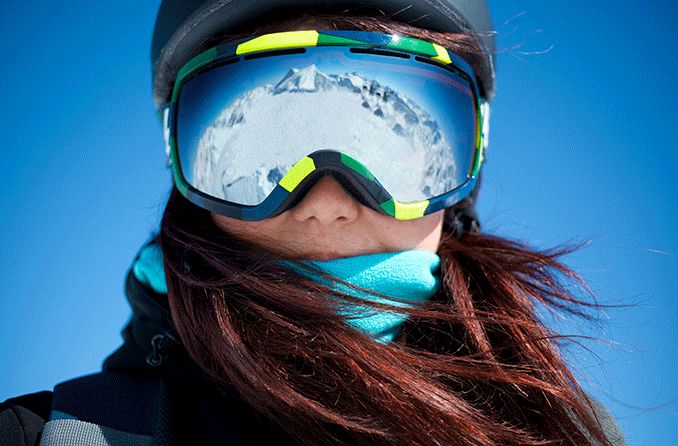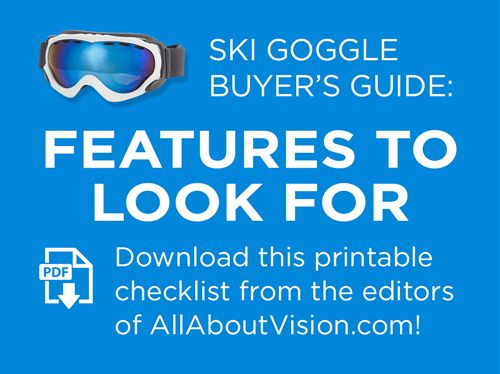Ski goggles: Which eyewear is best for snow and winter sports?

Ski goggles protect the face as well as the eyes, which means many are large enough to cover most of the upper portion of the face.
However, some ski goggles are smaller and less obtrusive.
Regardless of their size, ski goggles are designed to fit snugly around the eye area, preventing wind, snow and ice from penetrating and interfering with vision.
The lens area is intentionally large so you have a wide field of view and good peripheral vision.
How ski goggles are designed
Many ski goggle frames are made of softer, more flexible materials than traditional eyeglass or sunglass frames.
Nylon, rubber and propionate are popular because they hold their shape, do not become brittle in the cold and tend not to injure the face if you should fall or hit an object while traveling at high speed.
Most goggle styles are held in place on the head with a large, thick strap designed to make sure that eye protection stays in place no matter how rigorous your activities become.
Some ski eyewear looks more like regular sunglasses than athletic eyewear. But differences exist between these frames and traditional sunglasses.
Side shields, which may or may not be detachable, often are included as part of the frames so that wind and snow are kept away from the eye area.
Many of these styles also have cable, or wraparound, temples that keep the frames firmly in place until you want to remove them.
Lens choices in ski goggles
Lenses used in ski goggles are frequently a yellow-orange hue. This color enhances contrast, so you can see more clearly the shapes, objects and bumps in the snow, by blocking out the blue, or hazy, end of the color spectrum.
For this reason, lenses of this color sometimes are called "blue-blockers." Rose is another good contrast-enhancing color, as shown by our sports sunglass lens tint guides.
Some opticians advise against wearing polarized lenses when skiing, however, because you may be unable to see the icy patches on slopes that you'll want to avoid.
On the other hand, polarized lenses can reduce the "bounce-back" of sunshine off snow and ice that skiers might find bothersome.
Polarized lenses are an excellent choice for boating and fishing, because they reduce glare from sunlight reflecting off flat surfaces.
But as a skier, you'll need to consider the safety aspects of using polarized lenses. They are available in traditional sun shades such as gray and brown, as well as in the yellow or rose tones that combine better contrast with glare reduction.
Here are tips for buying ski goggles:
Shop before you get to the mountain, so you don't end up paying an inflated price.
Insist on lenses that provide 100 percent ultraviolet protection, to shield your eyes from the sun's harmful UV rays.
Look for anti-fogging features such as double lenses, anti-fog coating and wide vents.
Ski goggles come in large, one-piece constructions that can be worn alone by people who use contact lenses or don't need vision correction.
Alternatively, ski goggles will often accommodate smaller eyeglasses or sunglasses worn beneath them.
Some models also include inserts for prescription lenses that can be made to your individual specifications and placed between the goggle lens and your eyes.
If you're interested in these types of ski goggles, ask for advice from your eye care practitioner. Also, read our articles on how to choose the right ski goggles for you and buying the best ski goggles.
READ NEXT: Best sunglasses for skiing (product version)
Page published on Wednesday, February 27, 2019







